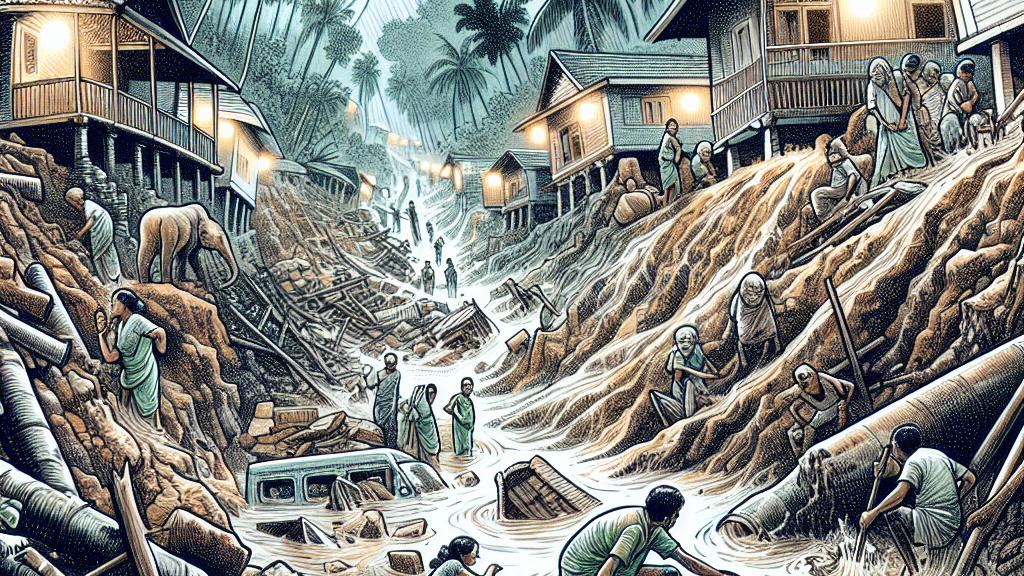Kerala Catastrophe: Monsoon Mayhem Claims 167 Lives!
Overview
- Kerala's Wayanad district experiences catastrophic landslides due to relentless monsoon rains.
- Current death toll surpasses 167, with multiple individuals still unaccounted for.
- Rescue efforts are severely challenged by extreme weather conditions and infrastructure damage.

The Setting of the Tragedy
On July 30, 2024, the southern Indian state of Kerala, particularly the Wayanad district, faced a devastating natural disaster as heavy monsoon rains triggered catastrophic landslides. The continuous downpour led to soil saturation and subsequent mudslides, which swept through villages while families were asleep. The destruction has been extensive, with approximately 350 out of 400 houses damaged. This incident marks one of the most calamitous events for Kerala, a state historically plagued by similar disasters during the monsoon season. The alarming frequency and intensity of such occurrences raise pressing concerns regarding climate impacts and environmental management in the region.
Human Cost and Ongoing Rescue Operations
The human toll of this disaster is staggering, with at least 167 confirmed deaths and the possibility that the actual figure could go up to 230 according to local reports. As rescue operations unfold, more than 1,600 individuals have been saved from the wreckage, but the efforts have been heavily hampered by the adverse weather, including continued rainfall and the destruction of vital access routes. The Indian Navy, along with the National Disaster Response Force, has been deployed to assist in rescue efforts, yet challenges remain as numerous families are still unaccounted for. Over 8,000 survivors are currently in relief camps, reflecting the scale of displacement and need for immediate humanitarian assistance.
Wider Implications and Climate Insights
The catastrophic landslides in Kerala emphasize the pressing need to reevaluate disaster preparedness and response strategies amid changing climatic conditions. The state has been identified as particularly vulnerable to extreme weather, as evidenced by previous disasters, including the massive floods in 2018 that caused extensive devastation. Experts indicate that climate change is exacerbating the frequency and intensity of monsoons, leading to increased landslide susceptibility. Kerala's Chief Minister, Pinarayi Vijayan, highlighted the urgency of proactive measures, including environmental preservation and enhanced infrastructure to combat climate-related disasters. Communities must focus on sustainable development strategies to protect lives and livelihoods while preparing for the unpredictability of nature.

Loading...